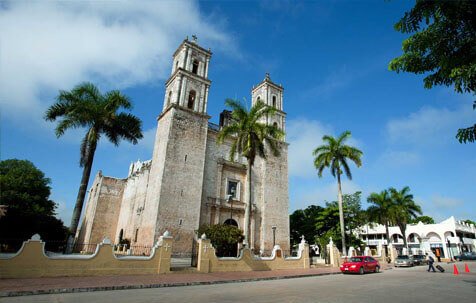
Population: 1.9 Million
Capital: Merida
Popular Cities: Izamal, Valladolid, Progreso, Piste (Chichen Itza), Celestun
Hotel Rooms: Around 5,200
After Mexican independence in 1821, a long struggle fueled by the Mexican government under the dictatorship of Santa Anna Federalists against Centralists ensued. Yucatan rebelled against the new sovereign and declared independence in 1841. The Caste War brought aid to the Mexican federal government, which became to formable an opponent for the Yucatan liberators and Yucatan was reunited with Mexico in 1848.
A small cross miraculously spoke to the people. The “small sacred cross” became “Chan Santa Cruz” and its notoriety quickly spread amongst the people. A Temple, the Balam Na, was constructed in its honor and soon living quarters and barracks were built around the Temple. Here lived the Mayan High Elders as well as the “Tata Polin”, the interpreter of the Talking Cross.
By 1901 federal troops had occupied the town and the Maya Rebels had withdrawn deep into the jungle. The Temple was destroyed and its rocks used to build a Catholic Church.
Today the cenote where the cross first appeared and a small monument built to commemorate the event can still be seen in Carrillo Puerto at calle 69 and 58. The Talking Cross was never captured by the federals and its whereabouts remains a secret to this very day.
Yucatan History | Quintana Roo History | Campeche History |






